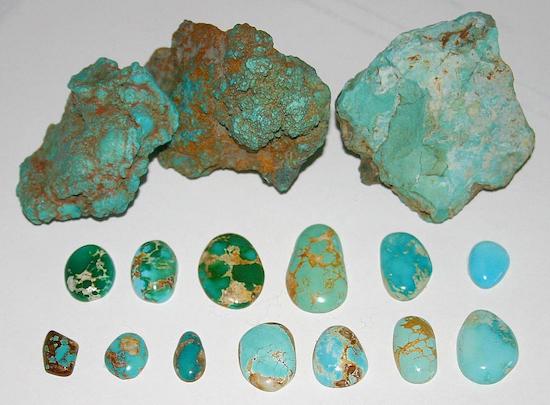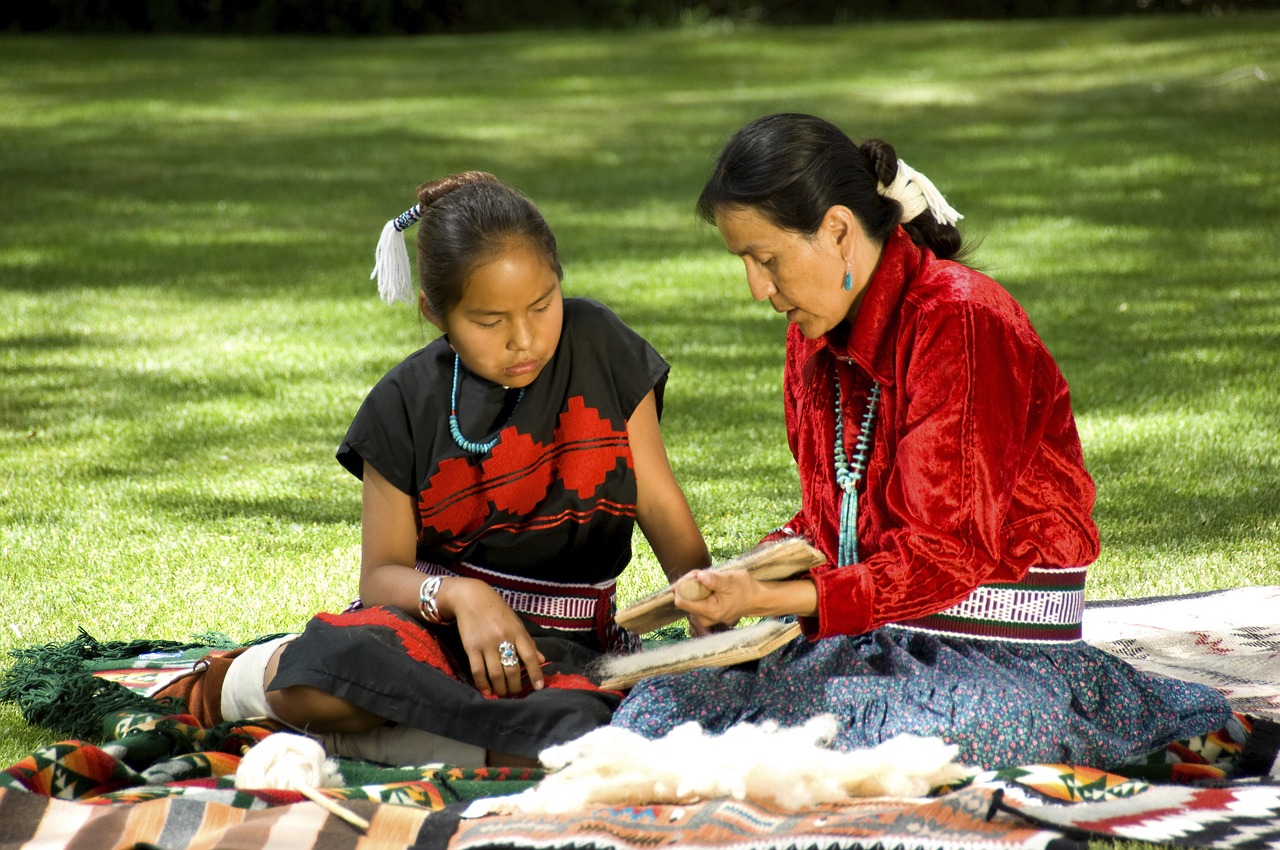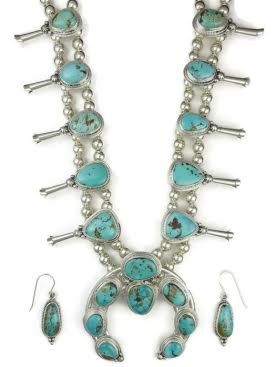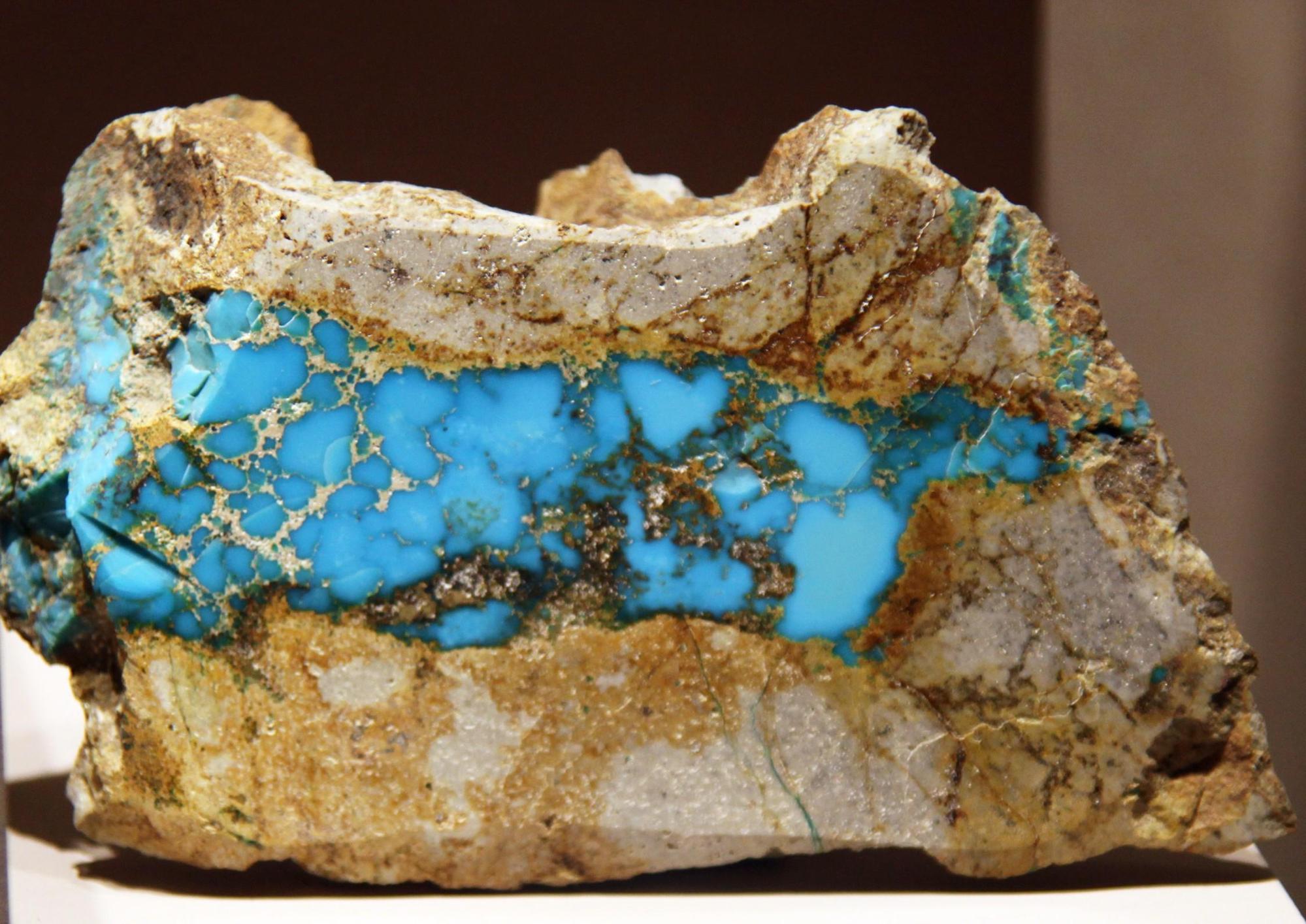The History of Navajo Turquoise Jewelry
Posted by Claudia on Sep 8th 2016
Turquoise, or “Doo tl’ izh ii” in Navajo, holds a very special significance in several Native American cultures, especially for the Navajo people. This semi-precious gemstone that is often called the “stone of life” is currently well-known because of the popularity of Navajo turquoise jewelry, but it has a long and fascinating history dating back many centuries to the ancient civilizations across the Southwest. Today, authentic turquoise is still highly prized for its scarcity and beauty, and in some cases its historical significance.
1. An Introduction to Turquoise
Before we talk about the history of Navajo turquoise jewelry specifically, you should know some basic facts about the stone itself. Being familiar with the traits that define turquoise will inevitably help you to imagine and understand why the Navajo people of times gone by found it so alluring, and also why turquoise is still revered by virtually all cultures to this day.
Turquoise Is the Only “Living” Mineral
Perhaps one of the main reasons why ancient cultures have long been attracted to turquoise is because of its color changing abilities. While turquoise is not really alive, it does change colors depending on the environment, light, dust, and one’s skin acidity. These different factors lend it a very mystical and almost sentient quality. Besides fascinating the Navajo people, this ability to shift in hue made turquoise ideal for use in divining, prophecy, and prediction. Changes in Navajo turquoise jewelry color were also used to gauge the health and well-being of the wearer, and also to restore vitality when needed.
The Natural Beauty of Turquoise

While the most widely known color of turquoise is the traditional opaque blue-green color, there are many other variations including white, powder blue, sky blue, and a yellowish-green. It was especially attractive to the Native Americans since it contains blue, green, black, white, and occasionally brown: colors that represent the natural world.
The texture and look of turquoise can also vary depending on its copper and aluminum deposits. That’s one of the great things about Navajo turquoise jewelry – each piece is completely unique, silently telling a history of its origin, as well as its travels across the globe. Few other stones conjure such imagination and mystique.
A Symbol of Prestige and Wealth
A talisman to kings, a boon to warriors, and a shaman’s tool, turquoise has been featured prominently throughout countless royal halls and tombs, including those of the ancient Egyptians. When something is stunning to the eye and scarce to be found – gold or diamonds for example – people are naturally going to desire it. The Navajo people once relied on turquoise as a currency and collateral for that very reason.
Turquoise is an enduring symbol of luxury, wealth, power, and status, and people will also crave it naturally. Today, the popularity of Navajo turquoise jewelry among jewelry and fashion enthusiasts is a clear testimony of its longevity in cultures of all eras. The iconic designs and stylings of Navajo jewelry will never go out of style, and it is only going to become more desirable (not to mention valuable) as resources become scarcer over time.
2. Turquoise in Navajo Culture

Now that you have a better understanding of the seductive nature of turquoise to people on a timeless, global scale, it’s time to take a look at its significance to the Navajo in the Southwest United States. As you learn about its integration into ceremonies, rituals, and daily life in general, you will better understand why using it in jewelry was a natural and even inevitable progression.
Turquoise for Health and Vitality
At its simplest, turquoise is simply a bringer of good fortune. The Navajo would store it in baskets or hang it from the ceilings to ward off evil in the home, and they would surround the exteriors of homes or graves with it for the same reason. Warriors would carry it to battle to ensure strength and protection. Hunters would bring it on excursions to promote luck and safety. Tribespeople would give it as gifts or symbols of kinship.
Understanding how often turquoise was depended on in day-to-day life really makes you realize why jewelry was the logical next step – adorning the body in this sacred stone is a convenient and attractive way to harness its power. In short, Navajo turquoise jewelry is a means to get in touch with the stone’s aura, rather than simply a fashion statement.
Turquoise in Rituals and Ceremonies
Much more than just a good luck charm, turquoise was truly hallowed to the Navajo people. In some Native American legends, it is said that when the skies opened up and rained after a long drought, the tears of the people seeped into the Earth and formed turquoise. The stone was central to many spiritual observances. For example, one observance involved casting a piece of turquoise into a river and saying a prayer to the god of rain, Neinilii.
The turquoise-rain connection doesn’t stop there. Tribeseople would utilize sticks with turquoise attached to seek out water, a critical practice in the Southwestern desert climate. When praying to the wind spirits, they would throw pieces of turquoise into the air, assuming the howl of the wind was the spirits seeking the stone.
Estsanatlehi, or Changing Woman as she is called in English, is a Navajo goddess who is widely known for her prominent use of turquoise in the legend. Initially, she herself was turquoise, and she also wore turquoise and shell jewelry, carried one turquoise cane and one shell cane, and lived in a turquoise home on the West horizon. Today, young Navajo women dress in a similar fashion at coming-of-age ceremonies, and the tribe sings songs that are said to have been sung for Changing Woman as she ran to toward the dawn as far as the eye could see and then back.
Pay Homage Respectfully by Wearing Only Authentic Navajo Jewelry
There are countless other examples of the Navajo people’s use of turquoise in religious observances. Many ceremonies performed centuries ago are still relevant to Navajo culture today. Understanding just how sacred turquoise is to the Navajo people gives a clearer context for the offensiveness of inauthentic, fake Navajo turquoise jewelry and other means of cultural appropriation.
Besides minimizing the generations of customs, techniques, and tireless effort that led to today’s exceptional modern Navajo jewelry, fake jewelry or turquoise also takes something holy and turns it into what is essentially a get rich quick scheme. When you support authentic Navajo turquoise jewelry, you can have peace of mind knowing that you are investing in quality pieces that help preserve a noble history and craft.
3. Silversmithing Changes Everything
Navajo turquoise jewelry would not be as iconic if it wasn’t for the introduction of silversmithing to the Navajo people. It is believed that a man named Atsidi Sani or “Old Smith” was the first Navajo blacksmith – meaning he worked with iron – and it is believed that he learned silversmithing from a Mexican silversmith between 1850 and 1853. The Spanish settlers in the area who had conquered the Puebloans in the 1500s also influenced a great deal of the silverwork at the time. Atsidi Sani taught the trade to other tribespeople, including his four sons.
After learning silversmithing, the Navajo silversmiths would create many objects from canteens and buckles for daily use to crescent-shaped pendants called “najas,” and disks, called “conchas” or “conchos” used to decorate belts. Often these products were made using melted coins, and they had to rely on primitive tools made from metal scraps until they were able to trade for commercial supplies.

During the early 1900s, a man called Atsidi Chon or “Ugly Smith” started incorporating turquoise into his silver creations. This unique Navajo turquoise jewelry style opened the gates for a whole new world of designs, with the Squash Blossom necklace (pictured) being one of the most enduring. Atsidi Chon also taught the art of silversmithing to the Zuni tribe. This led to more unique silver and turquoise jewelry designs from the Southwestern U.S. It was around this time that the Southwestern tribes started trading jewelry and using it as currency.
4. Navajo Turquoise Jewelry in the Modern Age
Navajo and other Native American jewelry are not going anywhere. As a timeless choice for complementing casual or formal attire, nothing compares. Today, fashion forward fashionistas and conservative folks alike are able to wear turquoise successfully. Authentic Navajo turquoise jewelry is a wonderful investment because it will always be in style, and it tends to appreciate in value over time.
Defining Styles of Navajo Jewelry
Navajo jewelry is known for large turquoise stones and big, heavy silver. Navajo artists do also incorporate inlay or cluster style stones, although they tend to use heavier silver than other Southwestern tribes like the Hopi or Zuni. The finished silver in Navajo jewelry also often has a satin look, rather than a bright shine. Navajo artists may also keep the original free-form shape of the stone, rather than cutting it. The most defining characteristic of Navajo jewelry tend to be its heavy weight and general ‘clunkiness.’ If a Navajo piece feels frail or lightweight, you may want to check your source to make sure it’s authentic.
Today’s Navajo Artists Keep an Enchanting Tradition Alive
If you have never held a genuine work of art handcrafted by a Navajo artist, you’re missing out. The attention to detail, meticulous craftsmanship, raw skills, and pure time put into every piece is nothing short of extraordinary. There is also something so special about knowing that the piece of Navajo turquoise jewelry that you own is the culmination of more than a century of refinement, not to mention the centuries of tradition that prefaces each and every piece.
While many of the early Navajo jewelry designs were inspired by the Spanish people who had settled in the area at the time, contemporary Navajo jewelry has taken on a life of its own. Many artists are continuing to innovate while still remaining rooted in tradition. At Southwest Silver Gallery, we proudly offer a huge variety of locally sourced, authentic Native American jewelry hallmarked by some of the most skilled and renowned Navajo artists in the country.
Purchase Genuine Navajo Jewelry with Confidence
Our hand-curated inventory includes a wide selection of premiere Navajo jewelry, as well as jewelry sourced from Southwestern Hopi, Zuni, and Santo Domingo tribes. We strongly believe it’s so important to support Native American artists, and that is why we support Navajo artists like Raymond Apachito who has been silversmithing for over 35 years, Stewart Alonzo who is a skilled fetish carver, and Calvin Begay who is well-known and praised for his work with silver and gold, as well as his mosaic inlay jewelry. We partner with many other respected Navajo artisans to bring you the finest Navajo turquoise jewelry that you can wear with pride.
The Southwestern Silver Gallery Guarantee
We work hard to provide a positive experience for each and every one of our valued customers. If you’re unsatisfied with your purchase for any reason, just let us know within 30 days and we will happily provide an exchange or a refund. Our expert customer support team is standing by to help you if you have any questions at all, so please don’t hesitate to get in touch for any reason.
Purchase Authentic Navajo Turquoise Jewelry Online Today
It’s clear that the Navajo people have a long and fascinating history with turquoise, and the beauty of it all is that it is still ongoing. If you’re fascinated by the alluring beauty that Navajo jewelry has to offer, why not invest in a piece for your collection? Southwest Silver Gallery is a trusted name in the industry, and we go to great lengths to make sure that every piece is authentic and legitimately sourced from the local tribes who want to share their work with the world.
Contact Southwest Silver Gallery for Further Information
If you’re interested in learning more about Navajo jewelry, or if you have any questions at all, we encourage you to call our friendly and helpful staff at 1-888-476-4367 or feel free to send us a message online through our contact page. Don’t waste your money on cheap replicas. Purchase authentic, premium Navajo turquoise jewelry online at Southwest Silver Gallery today.

